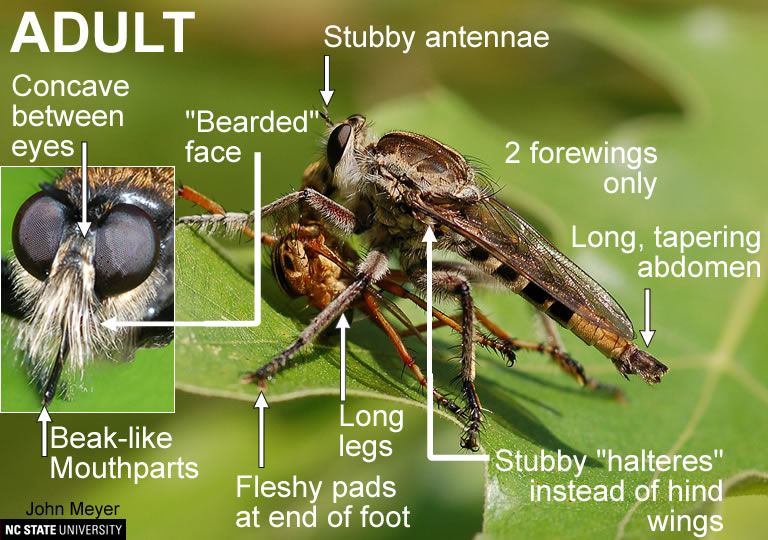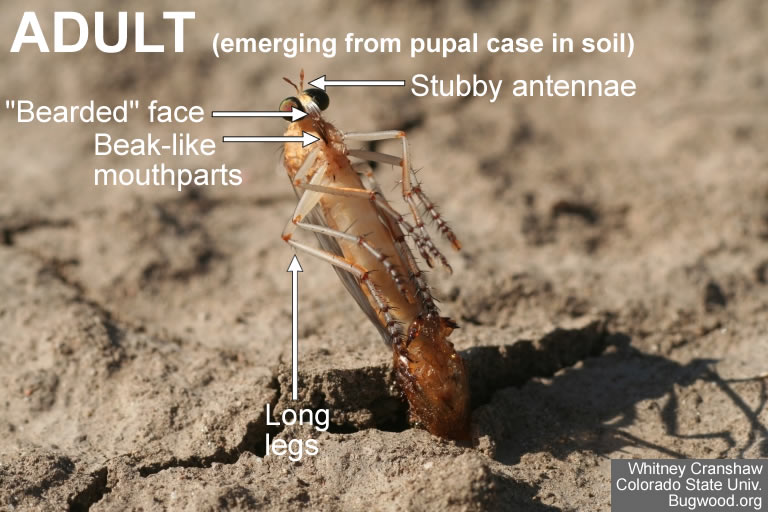Robber Flies
go.ncsu.edu/readext?563180
en Español / em Português
El inglés es el idioma de control de esta página. En la medida en que haya algún conflicto entre la traducción al inglés y la traducción, el inglés prevalece.
Al hacer clic en el enlace de traducción se activa un servicio de traducción gratuito para convertir la página al español. Al igual que con cualquier traducción por Internet, la conversión no es sensible al contexto y puede que no traduzca el texto en su significado original. NC State Extension no garantiza la exactitud del texto traducido. Por favor, tenga en cuenta que algunas aplicaciones y/o servicios pueden no funcionar como se espera cuando se traducen.
Português
Inglês é o idioma de controle desta página. Na medida que haja algum conflito entre o texto original em Inglês e a tradução, o Inglês prevalece.
Ao clicar no link de tradução, um serviço gratuito de tradução será ativado para converter a página para o Português. Como em qualquer tradução pela internet, a conversão não é sensivel ao contexto e pode não ocorrer a tradução para o significado orginal. O serviço de Extensão da Carolina do Norte (NC State Extension) não garante a exatidão do texto traduzido. Por favor, observe que algumas funções ou serviços podem não funcionar como esperado após a tradução.
English
English is the controlling language of this page. To the extent there is any conflict between the English text and the translation, English controls.
Clicking on the translation link activates a free translation service to convert the page to Spanish. As with any Internet translation, the conversion is not context-sensitive and may not translate the text to its original meaning. NC State Extension does not guarantee the accuracy of the translated text. Please note that some applications and/or services may not function as expected when translated.
Collapse ▲- Common Name: Robber Flies
- General Category: Predator
- Taxonomic Classification: Diptera: Asilidae
- Scientific Name: Many species
Description
Because of their large size and loud buzz when flying, these generalist predators are often confused with horse flies and other biting flies. However, because they are not blood feeders they will not fly around your head or try to land on you, and will only bite if mishandled. When they do alight on foliage, the distinctive bearded face, concavity between the eyes, long legs and usually long tapering abdomen give away their identity. Some are also bee and wasp mimics. Adults are predaceous on flying insects. Larvae are associated with soil or decaying wood, and are predaceous on larvae of other insects.


Identification
Review the images for tips on how to identify these predators.
Adults
Concavity between eyes, bearded face around beak-like mouthparts. Long legs with fleshy pads at end. Usually long, tapering abdomen. One pair of wings (as in all other flies) with stubby halteres in place of the hind pair.
Larvae
Rarely seen because of their location in the soil or rotting wood. They tend to pupate near the soil surface so they can emerge more easily from their pupal cases
Value in Pest Management
Because they feed on insects, they are generally regarded as being beneficial. However, because of their generalist feeding behavior they do not contribute to management of specific pests. They are not sold commercially.
Origin and Distribution
Native, throughout North America.


